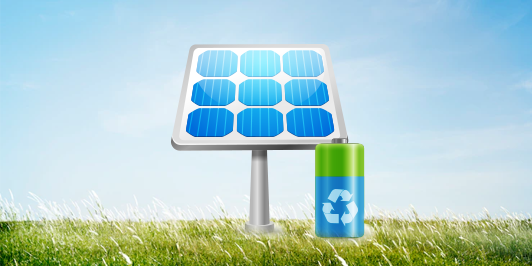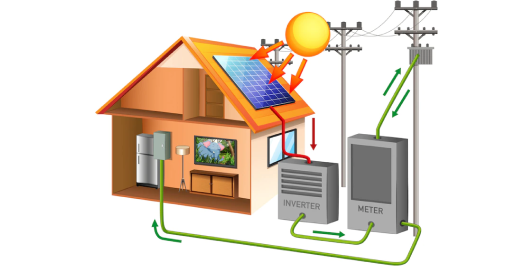1. Solar Panels
Solar panels are made up of crystalline cells. A typical home rooftop solar panel contains up to 40 solar cells. There are two main types of solar panel cells: polycrystalline and monocrystalline. It’s important to understand the difference between the two, because your choice will determine cost and amount of roof space your solar installation requires.
Polycrystalline:
Polycrystalline types of solar panels were developed first. These cells can be recognized within a solar panel by their rectangular shape and flaky light blue appearance. Industry professionals manufacture polycrystalline solar very effectively, as little silicon is wasted in the process. This contributes to the competitive pricing of installing polycrystalline solar panels. However, polycrystalline cells are not as heat tolerant or efficient as monocrystalline cells. Specifically, they do not generate as much electricity from the sun. This can affect factors like the amount of electricity you can generate from solar energy, and thus the space required for a solar power plant of a certain output capacity is more.
Monocrystalline:
Monocrystalline Panels can be identified by their uniform darker blue or black-coloured appearance. With a more intricate manufacturing process, the solar cells in these panels are made from a single large crystal of silicon, which is more difficult and hence more expensive to manufacture. Although they have higher cost, these panels also have a higher efficiency, and are more suitable for applications in which maximum power output is required in a limited area of solar panel coverage.
We also offer Monocrystalline panels with Half-cut solar cell technology, which increases the energy output of solar panels by reducing the size of the cells, so more can fit on the panel. The panel is then split in half, so the top operates independently of the bottom, which means more energy is created - even if one half is shaded.

2. Solar Batteries
Solar Panels produce energy for only the 6-8 hours in which sufficient sunlight falls on the panels. Solar Power Plants, especially Off-Grid installations, need to quickly store the energy generated within these few hours, and be able to output this energy to appliances throughout the day and night. If regular batteries are used for this purpose, the storage capacity needs to be oversized to charge the individual Solar batteries slowly enough, else they would be at a high risk of damage. Solar batteries have a higher maximum charging rate than regular batteries, making them safe to use in these demanding applications with the batteries charging and discharging rapidly every day.
3. Solar Inverter
Solar Panels inherently produce Direct Current (DC) power supply. However, since the supply from the electricity grid is of Alternating Current (AC) type, an inverter is used to convert the DC power into a similar AC supply, for usage in all home appliances. Solar Inverters are available in a variety of power capacities and are of multiple types and provide a consistent output even in a wide range of weather conditions. Contact us for more help on determining which solar inverters are compatible with your solar installation.


